Prepared for the Echo Park Film Center’s Film Friends Series, “Simple Machines,” October 9, 2021. View a recording of this talk here.
Flipbooks, zoetropes, praxinoscopes and other pre-cinema devices all share basic characteristics. They depend on a stroboscopic effect, can take on many scales and forms, and engage viewers by revealing their operating principles at the same time as they provide entertainment. As part of a category of devices known as “philosophical toys” they provide users with the pleasurable experience of vacillating between wondering at the illusion of movement and critically observing how the illusion is created. They make us think.
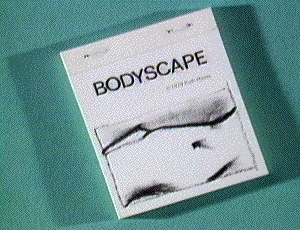
In 1979, I begin working with flipbooks out of frustration that my undergraduate films, Eggs and Body Sketches, weren’t getting much screen time in festivals or though distribution. Inspired by my senior thesis advisor, George Griffin, I adapted sequences from those films into flipbooks. I sold a number of them at “Suspended Animation”, a Seattle show of animated films and the artwork that composed them. That success encouraged me to make more, eventually turning the design and publication of them into Random Motion, a small business.
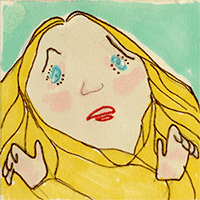
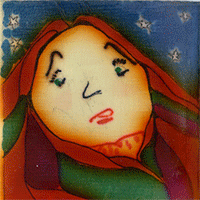
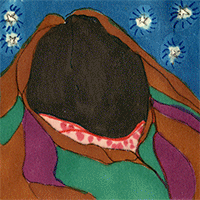
“Help Help, Let Me Outta Here!”, “Heroine Trapped in Night Cave”, and “Night Tongue Emerges From Cave Mouth”, created as a triptych in 1979.
Also in 1979, I submitted an entry to the First Annual International Zoetrope Competition. I had never seen a zoetrope before but followed the instructions for making strips, producing a triptych that features a woman trapped at first in just a frame, and then in a cave. My entry won a prize of $50 that I invested in making my own zoetrope. After that, I began to use it to practice animating, experiment with imagery and develop ideas for flipbooks.
Flipbooks involve linear sequences, while zoetropes feature cycles. When I first began working with the zoetrope, I noticed that the repetition of cycles creates dramatic tension.
 In narrative theory, the practice of describing a repeating event only once is known as the iterative. Storytellers (including filmmakers and animators) find the iterative useful to establish context at the beginning of a story. For example, “Every morning, when we turned on the TV, a big mouth on the screen opened.” The mouth opening on TV is a repeated event. But there won’t be a story unless some change sets the plot in motion. “This morning, when we turned on the TV, the mouth opened, shot out its tongue like a hungry frog and….”
In narrative theory, the practice of describing a repeating event only once is known as the iterative. Storytellers (including filmmakers and animators) find the iterative useful to establish context at the beginning of a story. For example, “Every morning, when we turned on the TV, a big mouth on the screen opened.” The mouth opening on TV is a repeated event. But there won’t be a story unless some change sets the plot in motion. “This morning, when we turned on the TV, the mouth opened, shot out its tongue like a hungry frog and….”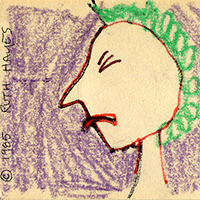
As I watched the moving images repeat themselves, I’d feel an impulse to make something happen that would spin them off into linear narrative, with a defined beginning, middle and end. This impulse resulted in the design of several flipbooks, including TV Dinner (1981), Gluttony (1985), Frogs in Heat, and Ron’s World.

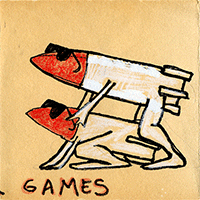
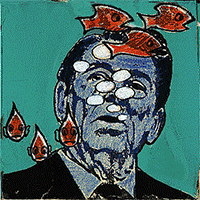
Two leap-frog zoetrope strips that preceded the flipbook “Frogs in Heat” (1985), and the zoetrope strip of President Ronald Reagan that led to the flipbook “Ron’s World.” (1984).
